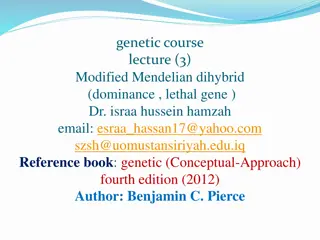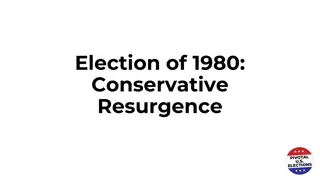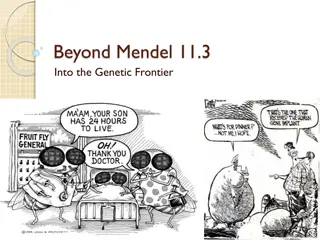The Transformation of American Society: A Shift to Suburbs and Service Sector Dominance
The period from 1940 to 1960 witnessed a significant societal transformation in America. More than 40 million Americans moved to the suburbs, facilitated by affordable housing initiatives like William Levitt's mass production. The rise of the car culture and the construction of the Eisenhower Interstate Highway System further fueled suburban growth. Migration to the Sunbelt states and the expansion of the service sector, particularly in information industries, reshaped the American economy and social dynamics.
Download Presentation

Please find below an Image/Link to download the presentation.
The content on the website is provided AS IS for your information and personal use only. It may not be sold, licensed, or shared on other websites without obtaining consent from the author.If you encounter any issues during the download, it is possible that the publisher has removed the file from their server.
You are allowed to download the files provided on this website for personal or commercial use, subject to the condition that they are used lawfully. All files are the property of their respective owners.
The content on the website is provided AS IS for your information and personal use only. It may not be sold, licensed, or shared on other websites without obtaining consent from the author.
E N D
Presentation Transcript
26.2 A Society on the Move
Americans Move to the Suburbs 1940-1960 more than 40 million Americans moved to the suburbs, one of the largest mass migrations in history.
Suburbs Attract Young Americans Flocked to the suburbs in part because the nation suffered from a severe shortage of urban housing. Affordable housing in a hurry. William Levitt-mass production of suburban homes Suburban development depended on help from the government. State and Federal governments constructed thousands of miles of highway that linked suburbs to cities. Federal Housing Administration-provided low interest loans.
The Car Culture Takes Over Registered automobiles jumped from 26 million in 1945 to 60 million in 1960.
Eisenhower Interstate Highway System Interstate Highway Act - authorized funds to build 41,000 miles of highway consisting of multilane expressways that would connect the nations major cities.
Migrating to the Sunbelt Sunbelt the name given to the southern and western states.
Reasons for Migration California which added more than 5 million new residents in 1940s and 1950s had north an appealing climate and a large number of jobs in defense industries. Development of air conditioning, invented in 1902. Latinos contributed to the growth of the sunbelt.
Impact of Migration As people moved political power went with them
The American Economy Changes Focus Service Sector-businesses that provide services, such as healthcare, law, retail, banking or insurance than in the manufacturing sector.
The Service Sector Grows Information industries including those who built or operated the first computer. ENIAC (Electronic Numerical Integrator and Computer) 1stcomputer
Entrepreneurs Start Businesses Franchise business- allows a company to distribute its products or services through retail outlets owned by independent operators. Ex. Holiday Inn Franchise
American Corporations Go Multinational Multinational corporations: companies that produced and sold their goods and services all over the world and established branches abroad. Ex. General motors. General Electric.
Unions Consolidate Their Gains AFL-CIO: new organization enjoyed good deal of political clout, especially within the Democratic Party.
Educational Opportunities Expand: Government Provides Funding for Education 1950s and 1960s California opened a new school about once a week. After Soviet Union launched Sputnik I in 1957 many Americans called for more federal funds for education. National Defense Education Act: 1 billion dollar program aimed at producing more scientists and science teachers. Authorized money for loans to high shoo land college graduates to continue their scientific education.
Education is Democratized California Master Plan: called for three tiers of higher education: research universities, state colleges, and community colleges. Brown V.S. Board of Education of Topeka that segregated schools were unconstitutional.























